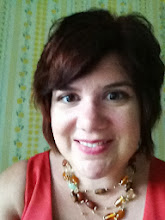Since Reader Response Theory, my assigned area to study, is a response to the New Criticism of the 1940s-1960s, I decided to explore this theory further to investigate if the notions of New Criticism are still relevant today. Tyson (2006) states, "'The text itself' became the battle cry of the New Critical effort to focus our attention on the literary work as the sole source of evidence for interpreting it"(p. 136). Although Tyson claims that New Criticism is not a contemporary literary criticism, and no longer practiced by literacy critics, I beg to differ.
The standardized manangement system that still dominates the majority of our school systems today, relies heavily on the use of high stakes testing, including the Ohio Achievement Test and the Ohio Graduation Test. The results of these assessments often determines funding, programs, and sometimes the faculty/staff for the subsequent school year. Test preparation dominates many districts, often from the first day of the school year. Students are often taught that only "one correct" answer exists, based on the format of the testing that the students are preparing to take. To me, this is the underpinnings of the New Criticism movement-the interpretation lies in the text, not in the reader.
Last spring, I had the opportunity to interview several K-8 reading teachers in order to collect data for the inference project that I am researching. I spoke with Cathy, a third grade teacher in a large public school system, who candidly admitted that test preparation begins on the very first day of school in her building. She teaches her students to answer literal questions by retrieving the answer from the actual text, often marking the page number on which the "correct answer" can be found. She does not spend any time introducing or reinforcing the concept of inference, since she beleives the Ohio Achievement Test at the third grade level asks very few higher-level questions that would require students to make an inference. I am currently researching standardized reading tests in five states, inclusdng Ohio, so I will be interested to determine if Cathy's statements are justified, or perhaps, just a response to the system in which she teaches.
Another premise of New Criticism that still pervades high school and college classrooms, is the concept of "close reading". This theory states that the "formal elements" of the language of text leads to its interpretation. The McClennan's Close Reading Guide defines several of the "formal elements" that Tyson (2006) describes in Critical Theory Today, including imagery, irony, and theme. Purdue University's Online Writing Lab also states that "close reading" is making a comeback and provides students a sample of applying "close reading" with a Shakespearean sonnet. Again, students are being taught to focus on the specific syntax and semantics of a text instead of making a personal connection.
Last Monday, during class, it was suggested that Advanced Placement Testing, may be another avenue to explore in relation to New Criticism Theory. It was somewhat ironic, that on Tuesday, the topic of Advanced Placement Tests was brought up by my dentist. Dr. F. began by asking my opinion on where his current eighth-grade son should attend high school next year. His son is deciding between the local public high school and an all-boys Catholic school in Cleveland. Dr. F stated that his son is already enrolled in advanced classes and plans to take Advanced Placement courses while in high school. A little research has revealed that the number of students taking Advanced Placement tests has significantly increased in the past years. However, the percentage of students passing the tests has decreased. Students can earn college credit by receiving a passing score of 3, 4, 0r 5 on the assessment. The New York Times and USA Today have both published statitistics on this area of concern for eductors. In the past, Advanced Placement tests were taken by "elite" students hoping to jumpstart their college career. Now, it seems that a different popluation of students are taking these exams. Has this contributed to the increased failure rate? Or, does the test perpetuate the notion of the "one correct answer or response," which disallows students' variations in the interpretation of the material? I hope to explore this area further, and look forward to sharing my findings.
Saturday, March 13, 2010
Subscribe to:
Post Comments (Atom)


Thanks for including the real-world data from Cathy and from the dentist, Rochelle! I really see AP as a huge bastion of new criticism (and, of course, if you've looked at the new Common CORE standards being proposed, the College Board is getting some reinforcements!)
ReplyDeleteOf course, I had to respond to this post! One advantage I see of AP tests is that content area teachers (as opposed to those who teach English) who teach AP classes actually discuss writing in their classrooms. They use rubrics and discuss different student responses together. Of course, this is all in response to test questions which having varying degrees of "correct" responses.
ReplyDeleteI think AP classes do offer students a level of rigor that is often not present otherwise in high schools. Again, the ends seem to dominate the means, however; "regular" or college-prep students are being prepared for one test (the OGT) and AP students are being prepared for another. And to throw another curve ball into the conversation, aren't college English classes still essentially largely operating under the theory of New Criticism? (At least, that is what the vast majority of high school English teachers will tell you.) If the AP test represents a "college final" of sorts, then isn't it just a precursor to most of the teaching and assessment procedures students will encounter in college?
I'd like to hope I was prepared to THINK for college, but I was ceratinly prepared for the 200-person-a-class multiple choice exams and essays that most definitely required "close reading" by taking AP course work.